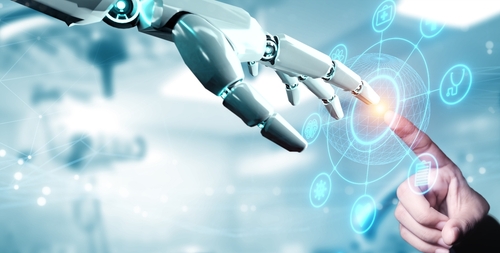Physical Address
304 North Cardinal St.
Dorchester Center, MA 02124
Physical Address
304 North Cardinal St.
Dorchester Center, MA 02124

Advancements in A and Machine Learning are bringing the future of intelligent, self-healing networks closer to reality writes Justin Day, CEO and founder of network connectivity supplier Cloud Gateway.
Imagine a network that can identify problems on its own and fix them, without human intervention.
The idea of a network that can generate insights and prevent errors from occurring has been discussed for over a decade now but progress has been slow. In today’s fast-paced digital landscape, the demand for efficient and reliable network infrastructure has never been greater.
Automating processes with AI and ML
At the core of a self-healing network is the ability to automate complex processes. AI and ML technologies are rapidly evolving, enabling networks to go beyond traditional automation by learning and adapting in real-time.
This means that networks can identify patterns, predict potential issues, and even take corrective actions without human intervention.
Consider a scenario where AI algorithms continuously monitor network performance. By analysing data in real-time, these algorithms can detect anomalies, irregularities, or potential threats. If an issue arises, the AI system not only alerts administrators but also takes proactive measures to remedy the situation, reducing downtime and minimising the impact on the users.
Simplifying network operations
The need for effective network management becomes more important as we continue to embrace hybrid working models. Traditional networks often struggle with clunky and disjointed processes, which can lead to delayed resolutions, increased risk of security breaches, and financial losses.
One of the primary goals of self-healing networks is to swiftly identify and resolve issues before they escalate. By automating routine tasks, such as updates, optimisations, and security protocols, AI simplifies network operations and allows both providers and end-users to have a smoother experience.
This means streamlined maintenance processes and fewer issues related to software failures. The root cause of problems can quickly be pinpointed, and corrective actions are automatically initiated. Whether it’s rerouting traffic to avoid a bottleneck or reallocating resources to optimise performance, AI can be used to empower networks to adapt and recover without human intervention.
This not only enhances operational efficiency but also significantly reduces the burden on IT and network administrators – reducing their workload and providing end-users with a more reliable and consistent network experience.

AI’s journey towards autonomy
It’s no secret that network infrastructure can be complex. Which is why it’s important to give its design and architecture careful thought. While the vision of self-healing networks is compelling, the foundation on which they are built also needs consideration.
There’s no point dedicating time to creating a self-healing network if the underlying infrastructure isn’t robust. As networks grow to connect more people, places and devices, cloud architectures like Secure Access Service Edge (SASE) provide a secure foundation to scale and fuel digital aspirations. Not only capable of handling evolving requirements but also providing the stability needed for the effective functioning of self-healing mechanisms.

Additionally, the evolution of AI and ML is a crucial factor in achieving truly self-sufficient networks. While there’s often concern about AI surpassing human comprehension, it’s important to recognise that AI currently relies on human input for its success. The goal of these technologies is to reduce dependence on human intervention, allowing networks to become increasingly autonomous.
As AI continues to advance, the fears of it surpassing human understanding should be replaced with the view that AI is a tool that complements human capabilities. Rather than perceiving it as a threat, AI can be embraced as a network management partner, one that opens opportunities to enhance everyday processes.
Realising the potential of AI beyond hype
We need to move beyond the hype cycle and recognise the tangible impact AI and ML have already demonstrated. For instance, healthcare technology applications showcase the potential of AI to detect diseases and support clinical decision-making. In financial services, the technology is being used to spot data processing errors and enhance customer interaction.
By shifting our perspective and acknowledging AI as a transformative force with practical applications, there is an opportunity to unlock its potential to enhance network management. By leveraging its capabilities to automate processes, swiftly identify and resolve issues, simplify operations, and move towards greater autonomy,
AI has the ability to transform networks into intelligent, self-healing entities. Shaping a future where cloud architectures support a wave of more resilient, efficient, and reliable networks that meet the demands of our increasingly connected world.